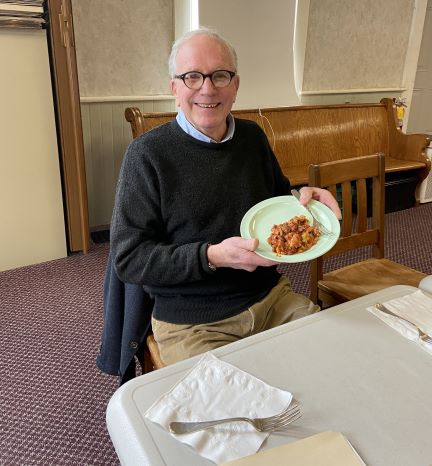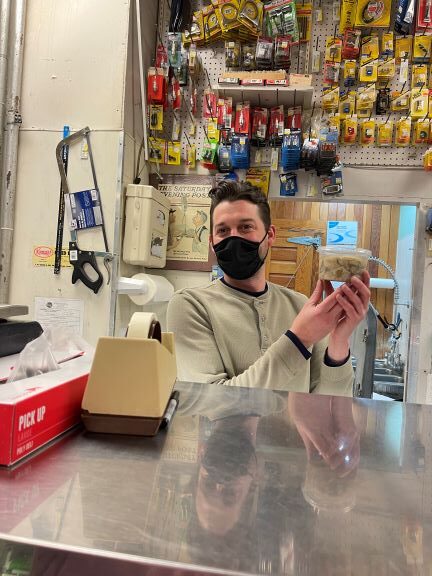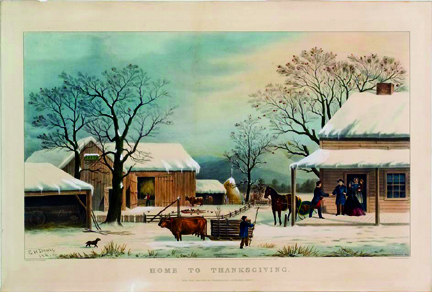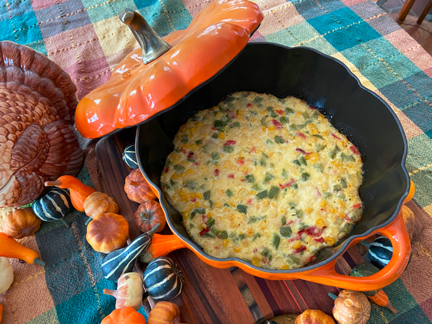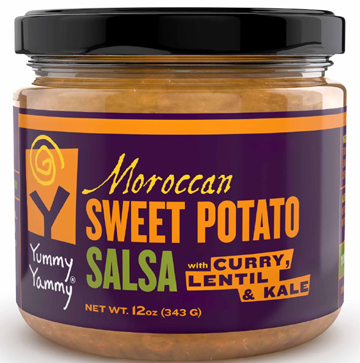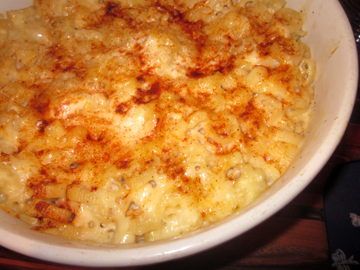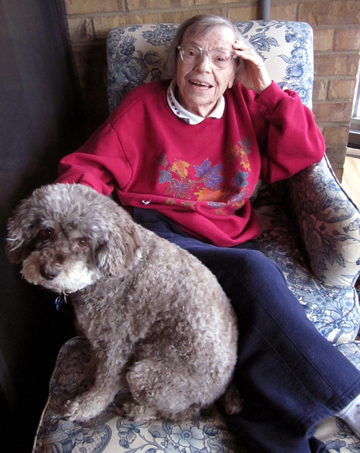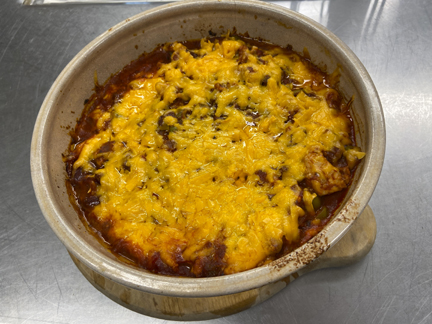
The little church I attend in Charlemont, Massachusetts, is in transition, getting ready to look for a new minister. Right now, we are enjoying sermons from the Reverend Randy Purinton of Amherst. Randy is a delight. He is wise and funny, and he often manages to work a song into his sermons. Those sermons always root themselves in the Bible but relate the passages of scripture to everyday life.
A few weeks back, the title of his sermon was “Thanks a Heap.” In it, he spoke of heaps. According to Randy, the word “heap” crops up in the Bible more than a dozen times, “claiming a variety of personalities from the despondent to the bizarre to the benevolent.”
He went on to discuss archetypes, patterns that evoke a sort of universal response in our hearts and minds. He ended up thrilling me by bringing food into his discussion. He focused on something that he views as both a heap and an archetype, the humble casserole.
He sees the casserole as an embodiment of Jesus’s exhortation to humankind to feed his sheep. Randy described making a chili casserole a while back with his wife Anita to bring to neighbors who had a family member in the hospital.
“As neighbors, it was all we could do, but it was okay,” he said.
We all follow Randy’s example from time to time when we bring food to the bereaved, the depressed, or the sick. We don’t always know what to say to the people we visit. Sometimes there really isn’t anything to say. Food speaks for us. Its warmth and nourishing qualities communicate our affection and good wishes.
“The casserole is more than food,” said Randy. “It’s a connection. Do you want to be the perfect believer? Do you want God to smile upon you and be gracious unto, lift up his countenance upon, you? Make a casserole and bring it to your neighbor in need.
“Or just do it for anybody for no reason. Thrill somebody! You’re practically guaranteed citizenship in the Realm of Heaven. The world needs heaps of casseroles, real ones and figurative ones.”
This may perhaps strike the reader as flippant. It’s true nevertheless.
My mother was the go-to person in her neighborhood when it came to getting everyone together to prepare and share what she called, with a nod to Shakespeare, “funeral baked meats.”
That phrase is cynical in “Hamlet,” but my mother believed that her neighbors’ funeral baked meats—which of course included much more than meats (salads, breads, desserts, casseroles)—not only comforted the bereaved but brought everyone together to cry, laugh, reminisce, and of course eat.
After the sermon, I suggested to Randy that it isn’t just casseroles that represent connection. One of the reasons I love writing about food is that just about all food connects us to others in some way: in the past as we honor people who taught us to cook, and in the present as we feed friends, family, and strangers.
I asked for the recipe for the chili casserole he and Anita made, and they graciously gave it to me. Their recipe was rudimentary; it was just a list of ingredients. I ran with it, however. With Randy’s permission, I even adapted it. Their version had a bed of brown rice, for example, but I substituted polenta. (Actually, I substituted cornmeal mush. That’s what polenta basically is. I prefer the grander name, however.)
Feel free to adapt it for your own household. You may certainly put your own favorite chili on top of polenta or brown rice and call it Randy’s Chili Casserole.
And remember, as Randy reminded our congregation in his sermon, that we are feeding God’s sheep when we donate to food pantries or care for others in any way. Feeding the hungry is basic social justice.
Randy added, “By the way, Jesus says nowhere in any of the four gospels that it’s a sin to feel proud of your casseroles…. All Jesus said is, ‘Feed my sheep.’ Have fun with this.”
The Purintons’ Chili Casserole
Ingredients:
for the basic casserole:
1/2 pound ground chicken or turkey (ground beef would be tasty but would be a little less healthy), broken up
1 small splash olive or canola oil
1/2 cup finely chopped onion
1/2 cup finely chopped celery
1/2 cup finely chopped carrots
1 clove garlic, minced
1 tablespoon chili powder (plus a bit more if you like)
1 teaspoon ground cumin or cumin seed
1 pinch red pepper flakes or chipotle powder
salt and pepper to taste
1 28-ounce can crushed tomatoes
1 can (about 15.5 ounces) kidney beans, drained and rinsed
1 small jar (5.75 ounces) salad olives (If you can’t find salad olives, buy stuffed olives and chop them up a bit.)
for the cornmeal base:
1/2 cup cornmeal
2 cups cold water
1/2 teaspoon salt
for finishing:
1/2 cup (or more!) grated Cheddar cheese
Instructions:
In a skillet, brown the chicken or turkey as well as you can, adding a little oil if necessary to keep the meat from sticking. Set aside.
In a 5-quart Dutch oven over medium heat, heat the splash of oil. Sauté the onion, the celery, and the carrots until they start to soften. Stir in the garlic and sauté briefly. Stir in the spices, the salt, and the pepper. Add the tomatoes, the kidney beans, and the olives. Drain the meat if it’s fatty, and add it as well.
Pour a little water (maybe 1/2 cup?) into the tomato can, and add it to the chili increase the liquid. Bring the mixture to a boil, turn down the heat, and cover it. Cook for 1/2 hour (or longer), stirring from time to time. Add a little water if the mixture seems to be drying out.
When the chili seems done, taste it, and add a little more salt or spice if it’s needed. Preheat the oven to 325 degrees, and make your polenta. This is done by combining the cornmeal with 1/2 cup of the water. In a saucepan, bring the remaining water and the salt to a boil.
Stir in the cornmeal mixture, and cook, stirring constantly, until the mixture is thick. (This will take very little time.)
Place the polenta in the bottom of a 2-quart casserole dish. Cover it with the chili mixture, and sprinkle cheese over all. Cover and bake for 30 minutes and then remove the cover and bake until the mixture is bubbly and the cheese is melted, up to 30 minutes more. Serves 6.
